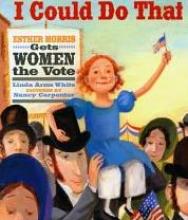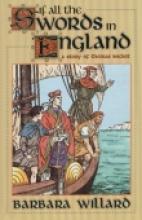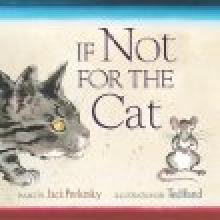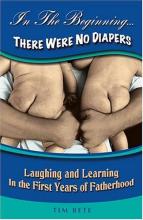No name
I Am Special
This religious education program contains 30 lessons and assumes that one lesson will be completed in a one-hour class each week. Unit One includes thirteen lessons designed to help children develop positive attitudes about themselves by learning about names, hands, feet, and the five senses. Unit Two's eleven lessons investigate various things given to us by God, such as families, friends, animals, and trees. Unit Three's five lessons focus on the holidays of Thanksgiving, Advent, Christmas, Valentine's Day, and Easter/Spring. The final lesson is on Growing. A heavy emphasis is placed on music and singing, as well as finger play activities, of which some are original and others traditional. An optional music cassette or CD is available but was not reviewed. Each lesson's craft activities may require a teaching assistant as many involve cooking, baking, scissors, or messy materials. Despite the detailed organization, considerable preparation time is necessary for many lessons.
One weakness of this popular program is that it is generically Christian. I can easily see this course being used in a preschool religious education classroom of any Christian denomination. The religious content includes a very brief, original, conversational prayer in each lesson, references to God with very simplistic adaptations of Bible verses, and a very simple retelling of the Christmas and Easter stories. No content was noted as being specifically Catholic. No priest, religious, or saint figure appears among the 105 flannel board figures. There are no church or crucifix images. There are no traditional Catholic prayers, even the very simplest Sign of the Cross, other than a meal blessing. No catechetical information of any kind is taught directly. With such a strong emphasis on music, this course could have easily begun teaching basic Catholic prayers or traditional hymns by taking advantage of the ability of children of this age to memorize easily.
5th edition, Nihil Obstat, Imprimatur
Teacher's Guide (spiral-bound softcover, 236 pages plus appendices), Student Activity Book (softcover 112 pages), Blackline Masters (Looseleaf, 62 pages), Flannel Board Packet (Looseleaf cardstock, 20 pages)
I could do that! Esther Morris gets Women the Vote
I, Juan de Pareja
This story tells of the mutual respect that two men, even though one is a black slave and the other his master, can have for each other. Although it is forbidden for a slave to learn or practice the arts in Spain at that time, Juan pays close attention to his master and learns to paint in secret. But is learning to paint worth his guilt? Is it worth the guilt of having stolen paints and the terror of being discovered?
I, Juan de Pareja, is an excellent story that I'd recommend for children ages 9 to 16. The reason I recommend it for older children is that there is some wanton cruelty, and death is a sub-theme of the novel. It can also be used as a read-aloud to older children and would be an excellent addition to your study of Spain or the Renaissance. This book should be readily available at your local library, or even a good used book store.
If All the Swords in England
If Not for the Cat
If not for the cat, And the scarcity of cheese, I could be content.It has something of the simplicity and weight that I find so pleasing in William Carlos Williams. And several others are beginning to work their way in as well. Like this one about the kangaroo:
Safe inside my pouch Sleeps the future of my kind-- Delicate and frail.Nor am I the only one. After only two or three readings my three-year old remembers and recites quite a few lines herself. I have found her picking up the book on her own, flipping through the pages, and reciting what she remembers. Each poem is in the voice of a different animal and Prelutsky's genius is in the personality of the different voices, hard to convey in a so short a form as haiku. I love the way he captures the slow sloth, the hive mind of the ants, (humorously followed immediately by the ant eater), and the threatening presence of the snake and the skunk. Especially memorable are the rounded polysyllables of the jellyfish:
Boneless, translucent, We undulate, undulate, Gelatinously.Ted Rand's paintings are a lovely match, each one has a very different tone, well suited to the paired poem. My favorite is definitely the dark, moody one of the moth drawing close to a candle. Though the bright hummingbird hovering near festive orange nasturtiums is also right up there.
Implementation of an Ignatian Education in the Home
The focus of this booklet is on the method of teaching. Mr. Crotty goes through the timeless and time-tested Jesuit philosophy of education and applies it to homeschooling. He has put together an outline that could be successfully applied to any curriculum. The ideas will be especialy helpful for parents who are homeschooling their teens, but it is useful to consider such important goals even when our children are very young.. Although it's a short booklet, the reading is rather heavy. I think you'll find it well worth the effort. Mr. Crotty recommends that reading The Spiritual Exercises of St. Ignatius will make the booklet much more understandable. He recommends the translation by Anthony Mottola which is published by Image Books. The booklet lends itself to group discussion - and such a discussion would help to hash out some of the meanings and details.
In God's Garden
Usually starting with the saint's birth and childhood, the story introduces children to legends and famous stories about that saint. Because of the fantastic quality of some of the stories, the parent may want to mention that some of the legends may not be true, like St. George killing a dragon, but we do know that the person was holy. In fact, the author does admit this in a few places when she comments, "Whether all this really happened we do not know; but one thing we are certain of . . . ."
Similar in style to Once Upon a Time Saints by Ethel Pochocki, the stories hold the reader's attention to the last word. Although the stories include facts from the saint's life, the stories are not biographies. They are stories written to introduce children to the saints and inspire them on to imitate their lives of holiness.
In the center of the book are color reproductions of paintings of the Saints by famous Italian artists such as Titian, Fra Angelico, Giotto, and others. The artwork is not dazzling compared to the bold, vibrant colors of some of today's picture books. They are, however, a way to introduce your children to some of the outstanding artists of the past.
Binding details: Gold embossed hardback
In Search of Shakespeare
In the Beginning...There Were No Diapers
A Catholic parenting humor book? Yes, it is possible. Tim Bete has the timing, the subtle humor and the Erma Bombeck training to take the early years as a new parent, and tell it like it is: from the 672 rules every parent must have in the average home to the bribing of children into toilet training, Bete, a father of three young children, never misses a beat.
One thing I liked about this book was that although I'm a mom, I had just as much fun reading it as any dad. In fact, there were times I thought, "Yep, I've been there, I'll bet Tim's wife told him about that," whatever that was (after all, how many dads are really directly involved in toilet training? How many get up in the middle of the night to the sound of a crying baby, other than to say, "Honey, I think the baby needs you," I mean?)
Fathers and mothers are going to have a great time laughing at the way Bete teaches his children about food, ("What do you think about chocolate french fries?" he asks his daughter. "Great! Can I have some?" she says. "How do you feel about green ketchup?" he asks. "Yuck," she says, then adds, "but could I try it on the chocolate fries?") or about playing by themselves (the way to get kids interested in their toys, Bete explains, is having more kids. "As soon as a sibling is playing with their toys, the child is suddenly intensely interested in them.")
Bete is pro-life, pro-children, pro-family and positively Catholic. And the fact that Barbie, Thomas the Tank Engine and the shepherds can all play together under the Christmas Nativity set is proof that he has real children.
The chapters are short, the stories are sweet, humorous and even touching. I found this book to be a great reminder of the fun and laughter of childhood, and a good reminder not to take parenting too seriously. The life-lesson reminders are good, as well: take time to talk with your children, hold them, read to them, and give them lots of love. Before you know it, you'll be taking your sixteen-year-old out for driving lessons, and remembering how you once had to put green ketchup on the chocolate french fries. Then suddenly–botta bing, botta boom–you become your grandparents, saying, "How fast they grow!" Excellent gift idea for a young or soon-to-be dad, as well as your own husband (Christmas, or Father's Day).







